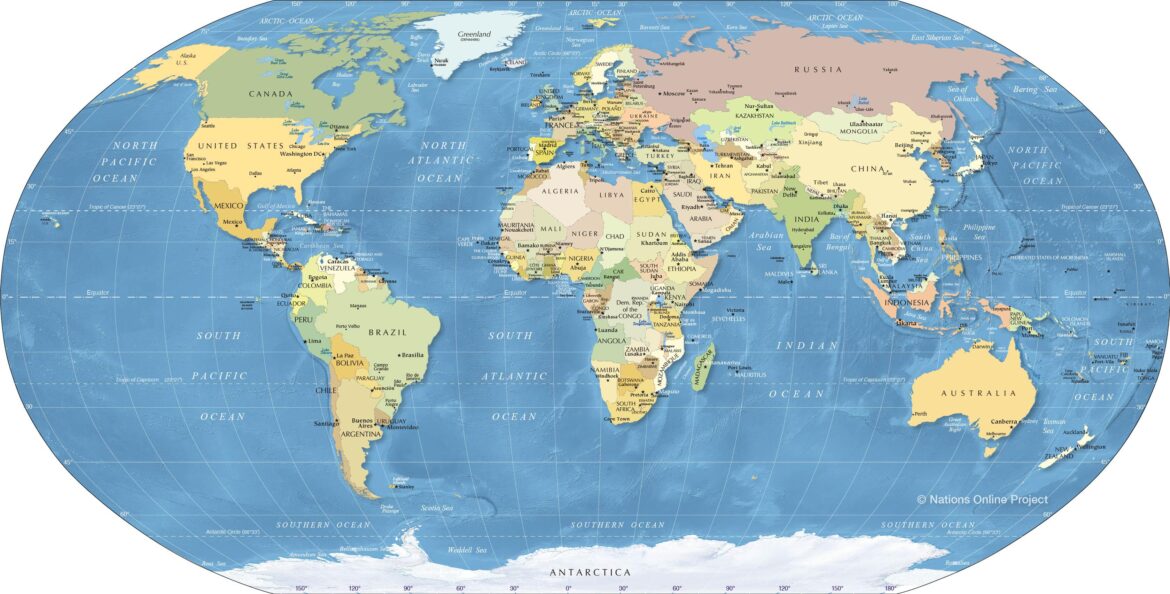The Middle East and Asia, a tapestry woven with ancient threads of history, culture, and conflict, present a complex tableau of nations, borders, and zones of turbulence. In this region, every line drawn on the map tells a story—often a painful one—of disputes over land, identity, and faith. For centuries, the crisscrossing borders have delineated territories inhabited by diverse peoples, but they have also created a landscape racked by tension and discord. From the Mediterranean to the Indus River, the geopolitical contours of these regions reflect not just human ambitions, but a deep and abiding struggle for understanding and peace.
As one gazes upon a map of the Middle East and Asia, it becomes apparent that the borders are as much about separation as they are about identity. For Christians, these borders often represent not merely a political demarcation, but a spiritual crucible within which communities are forged or fractured. The Holy Land, encompassing parts of modern-day Israel and Palestine, stands as a paramount instance. It has been the epicenter of millennia of conflict, a sacred space tangled in the ambitions of various nations and religious groups. This region, revered by Christians as the birthplace of Jesus Christ, bears witness to the clashing narratives of nationalism and faith that characterize the human condition.
The maps reveal numerous conflict zones. Syria, for instance, has become a flashpoint of violence and displacement, where the echoes of ancient empires battle with 21st-century realities. The Syrian civil war has not only reshaped the boundaries of political power but has also created a humanitarian crisis that transcends borders. In this crucible of chaos, Christians have found themselves caught in the crossfire—often subjected to persecution and displacement. Their plight evokes a profound sense of sorrow within the Christian community globally, as the teachings of Christ advocate for compassion, love, and mercy.
The modern state of Iraq provides another poignant example. Once considered a cradle of civilization, Iraq’s historical beauty now lies scarred by the ravages of war and sectarian conflict. For Christians, the loss of ancient churches and communities has been catastrophic. The map of Iraq is littered with reminders of these lost heritages, as the nation grappled with invasions, insurgencies, and external interventions, each fostering a climate of instability. The enduring presence of ISIS significantly exacerbated this situation, demonstrating how ideologically driven extremism can obliterate centuries of shared history.
In Asia, the narrative continues with nations like Afghanistan, where the unrelenting strife has obliterated countless lives and communities. The delicate interplay of tribal allegiances and foreign interventions has fostered an environment rife with conflict. Christian minorities face persecution, often living in the shadows of a predominantly Islamic society. Their faith, once a source of solace, now becomes a mantle of vulnerability, highlighting the precarious balance of belief and survival. The map of Afghanistan is marked not only by its rugged terrain but also by the scars of conflict, reflecting the trials of its inhabitants.
Yet, amidst these tumultuous landscapes, it is essential to recognize the resilient spirit of faith that persists. Churches, often seen as beacons of hope, stand resolutely amid despair. They embody the hope that transcends borders, cultures, and the struggles against oppression. Believers rally together, often under the most harrowing of circumstances, to foster a community of support and love. It is this tenacity—this steadfastness in the face of adversity—that resonates profoundly within the Christian community, calling to mind the enduring symbolism of the Good Samaritan.
Similarly, maps of the Middle East also illustrate the complex relationships between neighboring nations. In the Persian Gulf, for instance, the ongoing tensions between Iran and its Arab neighbors echo the age-old conflicts that have shaped the region. The intersections of geopolitics and religion often exacerbate these tensions, leading to a perpetual cycle of conflict and mistrust. For Christians residing in these areas, such international strife presents a dual challenge: navigating their existence within an often-hostile environment while maintaining their spiritual convictions. In these dark times, the call to reconciliation and unity resonates with increasing urgency.
Looking beyond the immediate borders, the broader conflict between Israel and Palestine encapsulates the struggle for identity and sovereignty in a vividly stark manner. The territorial disputes in this area symbolize a deeper fight—one for dignity, belonging, and the right to coexist peacefully. Each attempt at peace negotiations is a reminder of the fragile hopes that bind the present to the future. For Christians, the peace process must be infused with a spirit of compassion—a reflection of Christ’s teachings that urge reconciliation rather than division.
In conclusion, the maps of the Middle East and Asia are not simply geographical representations; they are chronicles of humanity, filled with narratives of faith, suffering, resilience, and hope. While borders may separate nations, they simultaneously weave a narrative that unites them in their shared experiences of conflict and aspirations for peace. For Christians, understanding the geography of this region necessitates a deeper awareness of their role in fostering dialogue, compassion, and a commitment to justice. As these nations grapple with their histories, Christians are called to engage meaningfully, lending their voices to the chorus of hope amid chaos, striving to illuminate the potential for harmony through the teachings of love and forgiveness. In this enduring quest for peace, every map becomes a testament to the unyielding spirit of humanity, urging us to look beyond borders to the common ground of our shared existence.



